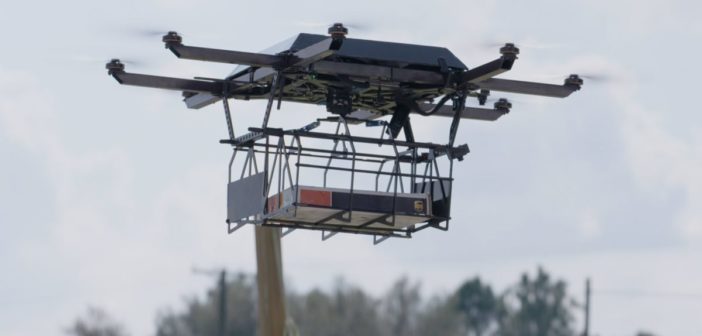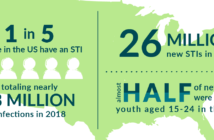The e-commerce markets continue to grow at a double-digit pace every year in the United States. This growing demand offers a great opportunity for the delivery market. Recent technological innovations, new business systems, and new delivery companies have caused major disruption in the way a package gets delivered to the consumer. Especially, the last mile of a delivery can be drastically improved, since it makes up around 30 percent of the total delivery cost, according to a research project by the Stanford graduate school of business.
These major changes matter to everyone, whether a person is just ordering something from Amazon or whether a person is looking for a well-paying job. The logistics industry in the United States alone made $1.48 trillion dollars in revenue in 2015. This marks eight percent of the total gross domestic product (GDP) in the U.S. The United Parcel Service (UPS) alone employs around 400,000 people in the United States alone. Trucks alone transport 10.5 billion tons of freight a year, while a 140,000-mile railway network transports 5 million tons every day, according to data from Statista.
The four major components that make up the supply-chain of a logistic company are maritime transportation overseas, railway, trucking, and air freight. Most companies have developed an efficient supply chain over the years through complex software and the use of logistic centers. Companies, which have improved the supply-chain, have seen tremendous increases in profits, like Walmart did.
“We can’t sell it, if we don’t have it. So, if we want to be able to sell products we have to get them from where they are to where we want to sell them. And what makes this complicated is that it’s not just the product itself, but also all the things that make up the product. If we want to maximize our profits we need got to have product what we need, when we need it, and for the best possible price,” said John Lax, who is a professor of Marketing in Saint Leo’s school of business.
There are two different forms of freight delivery that the companies are trying to improve. The one is for business to business sales, like when the local Walmart needs fresh products on the shelf to sell. This transportation is often seen as the easier one because the shipping cost will be low, since the cost is spread over thousands of items. Another one business to consumer delivery, however, the consumer carries the full cost of the desired item. In this form of delivery, the major problem is the last-mile delivery that stands for the transportation from the closest distribution center to the door of the customer.
Since the last few miles of the delivery make up around 30 percent of the cost, there is potential to save for the customer. Based on USPS postal rates, a package from Los Angeles to Saint Leo costs $6.45, while the last 5.2 miles from the package center in Dade City to the University make up $1.94 of that total cost. This means that the distance from Los Angeles to Dade City it costs $0.00018 dollar per mile, while it costs $0.37 dollar per mile from Dade City to Saint Leo University.
To tackle this problem companies are spending hundreds of millions on research and development of technologies that can tackle these problems. Amazon, Microsoft, Google, and DHL are just some of the multi-billion companies that want to earn a leadership role in these upcoming industries.
Three new technologies that seem to be very promising are delivery robots, drones, and self-driving cars. Delivery robots that are about the size of a dog have already been tested on college campuses. In big cities, however, they face major problems because they can easily be stolen or hit by a car when crossing an intersection.
Self-driving cars and trucks can be used for long and short range deliveries. The only issue will be to get the legal permission for fully automated vehicles without a driver. In addition to that, there have been issues with the legal causes when a driverless vehicle causes an accident.
The most promising technology to date are the drones. The first legally permitted drone delivery has been made in late 2016 in Arizona, according to robotictrends.org. Having fully automated drones pick up a package from a logistic center and delivering it to the backyard of the customer would significantly decrease the total delivery cost for the consumer and the company. In addition, drone delivery would make it possible to get a package delivered within less than an hour.
“There will be further change through smarter computers. Through artificial intelligence the machines will become much better at predicting how much potato chips we will need for Easter weekend. I went to Publix the other day and they were out of eggs because it is Easter time,” said Lax. “Another thing that is going to change is the physical transportation. We are less than a generation away from the trucks not needing drivers anymore, while robots will load and unload the truck. This will be good for business and the consumers, but it will be a major problem that hundreds of thousands of people won’t have a job anymore. We will need to figure out what we are going to do about the jobs from all the people that we are replacing.”
There will be many challenges to integrating these new technologies, while keeping people employed. Especially, with the new president trying to keep unemployment low, it will show whether the companies get the permission to utilize drones and self-driving cars in the future. However, with every challenge comes the opportunities to grow the economy.
“There will be many good job opportunities in the logistics industry. Just because the computers will get smarter it does not mean that we will not people that understand how the computers work. There will remain a lot of jobs that require soft skills, like anything that has to do with communicating with other employees or customers,” said Lax.
Only time will show, which company will take a leading position and revolutionize the logistics industry. For students with an interest in technology, there will be even more well-paid job opportunities in the field of logistics. The market is wide open for new entrants and small businesses to become the next Apple or Microsoft.





